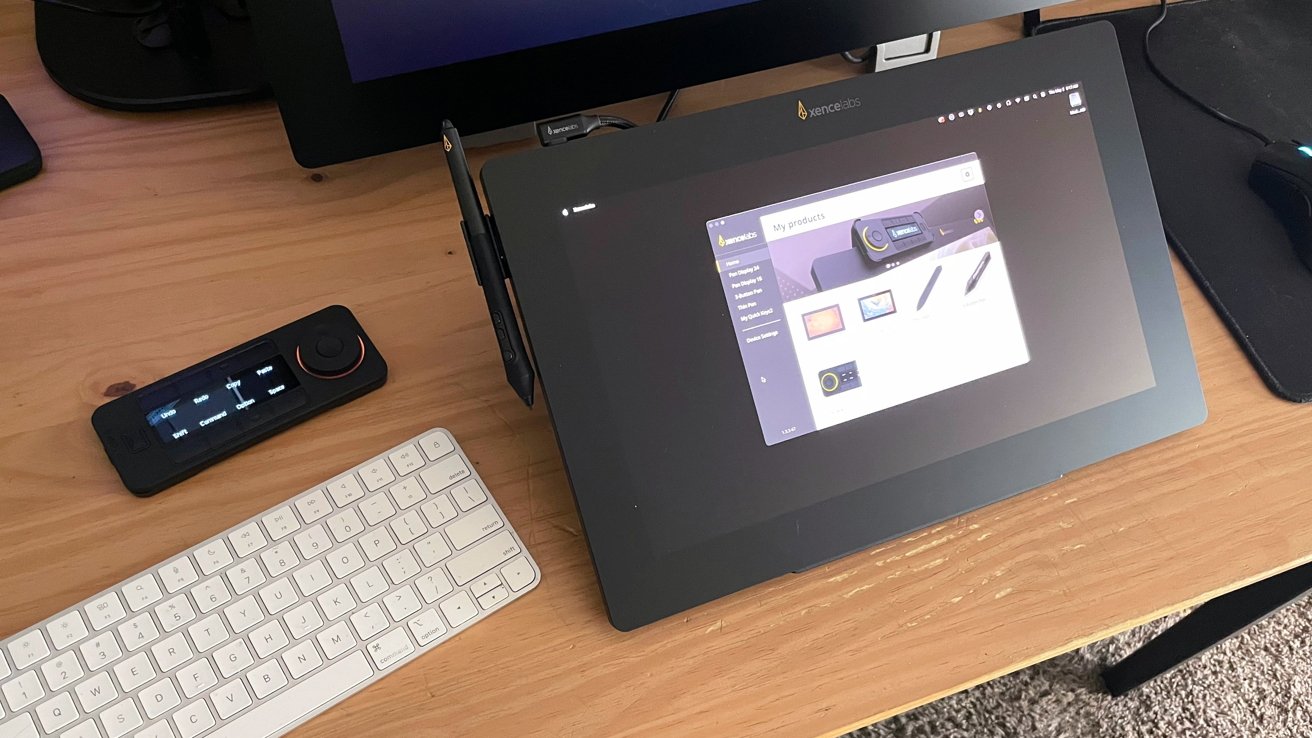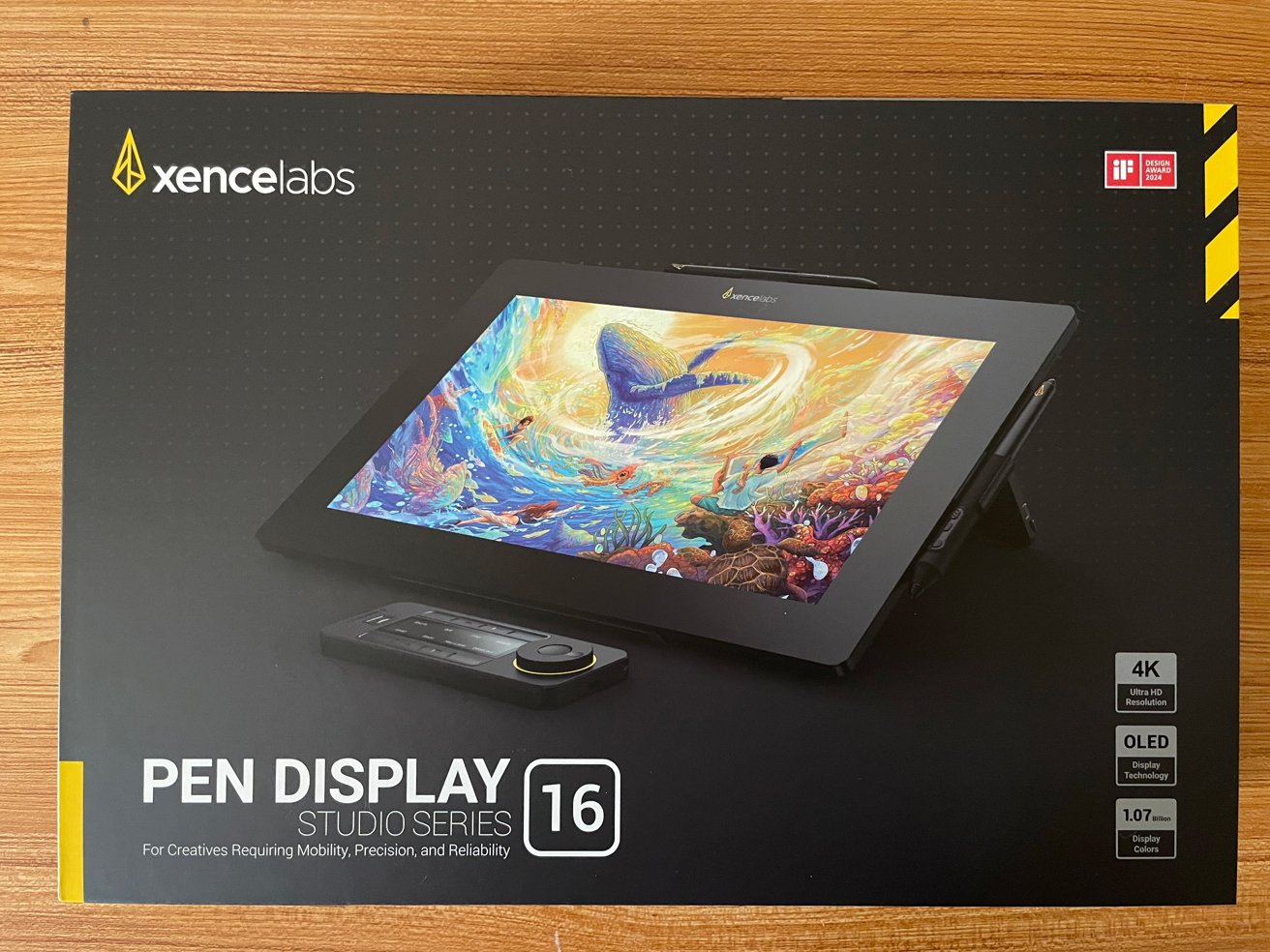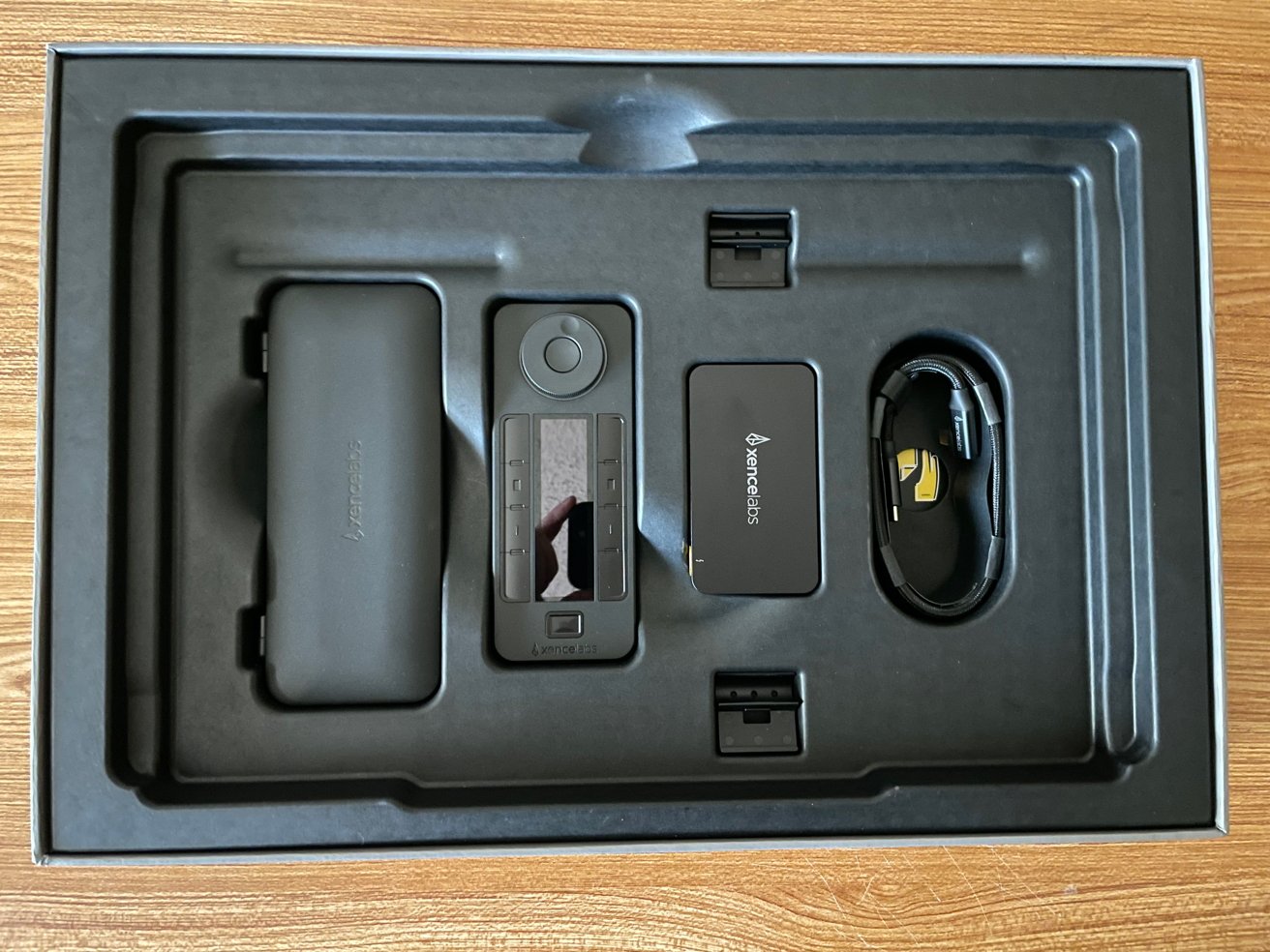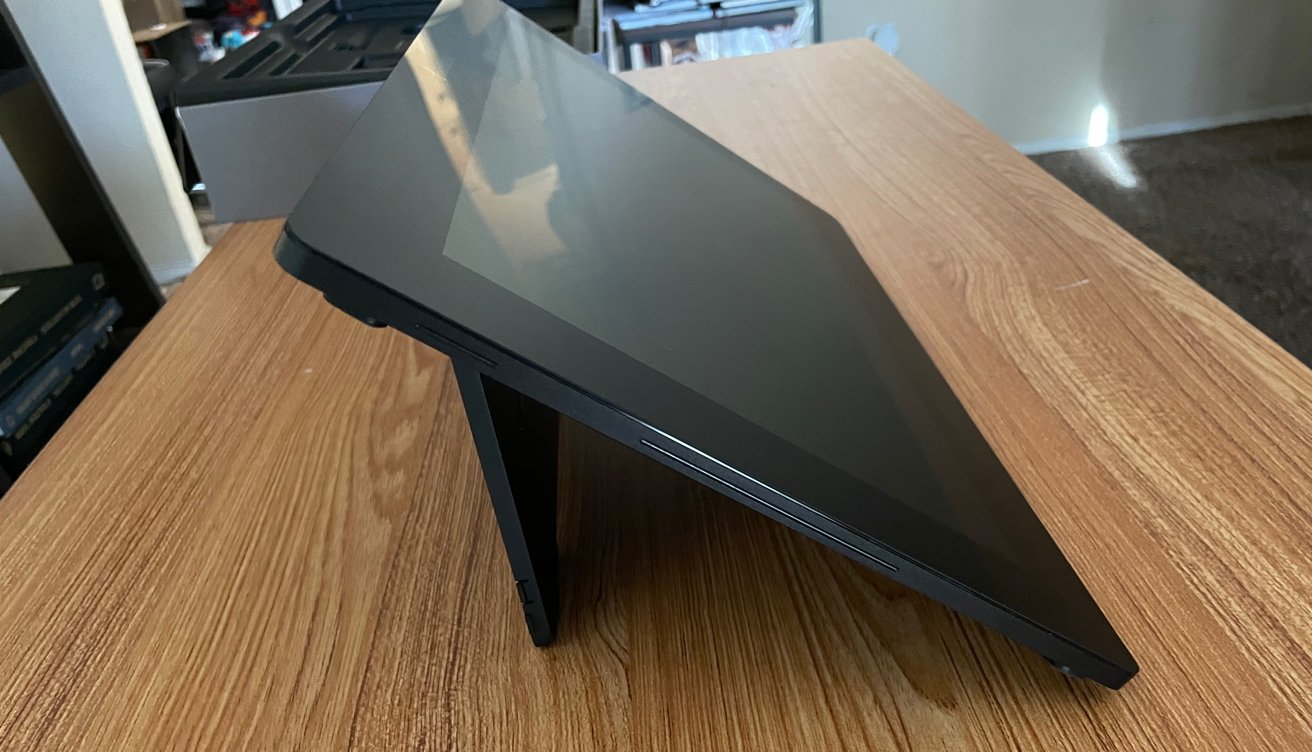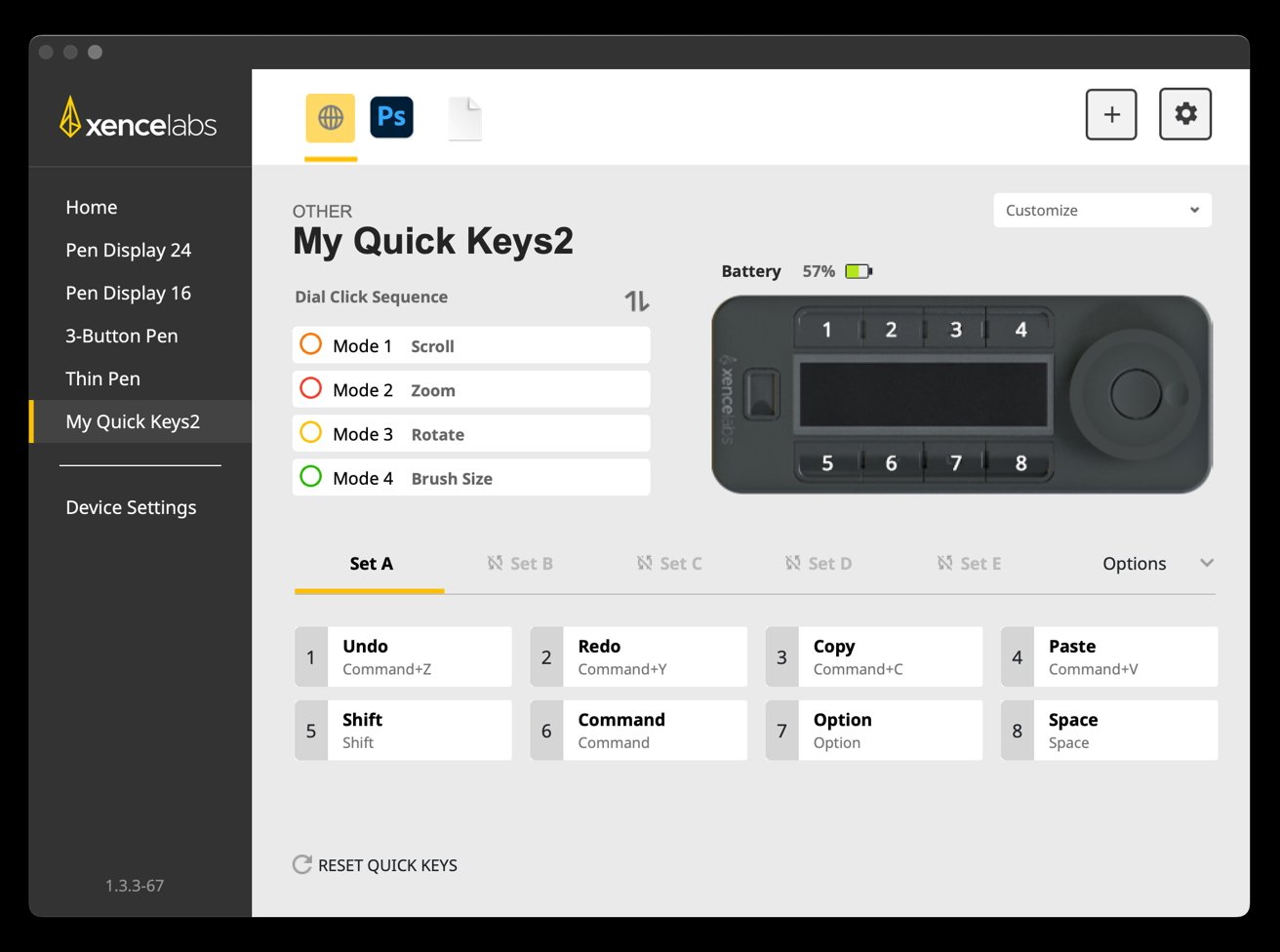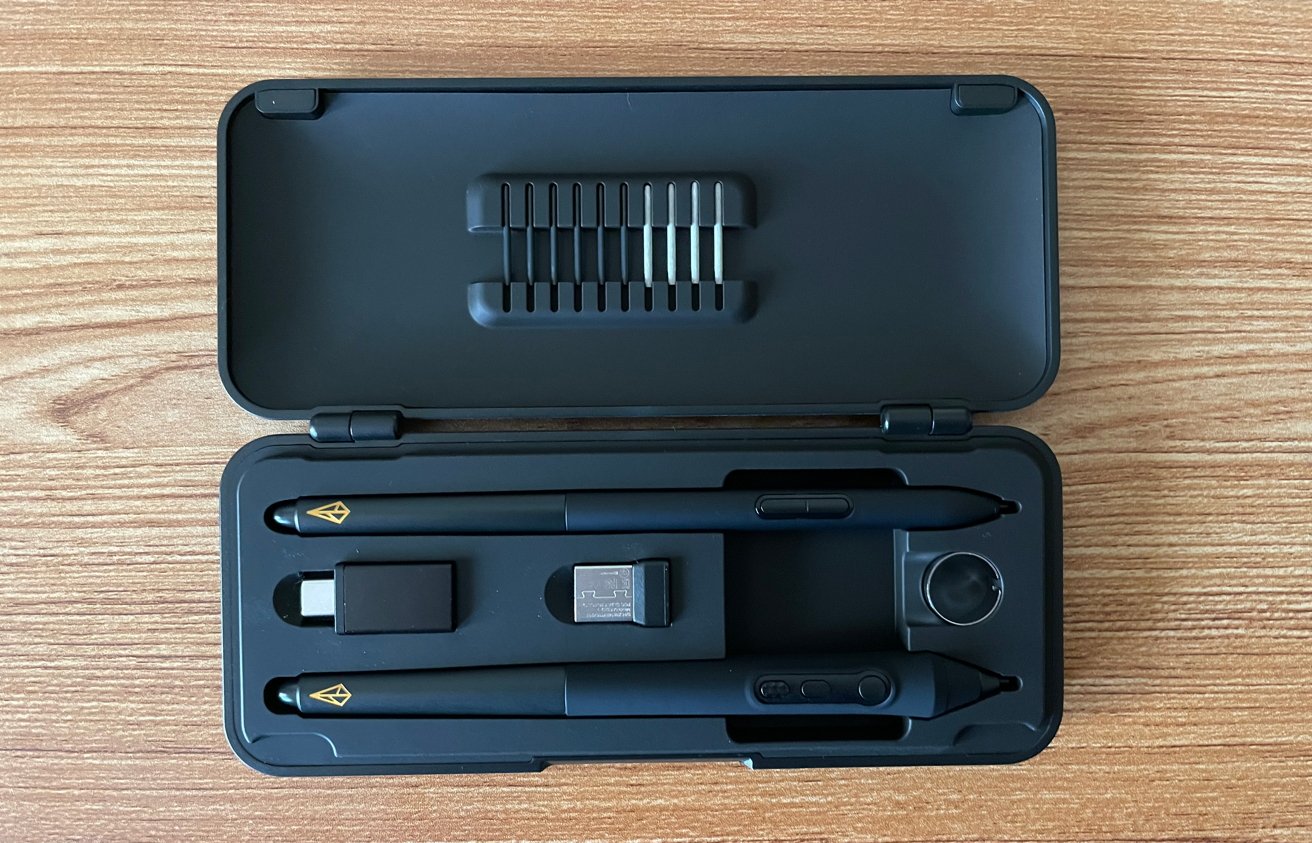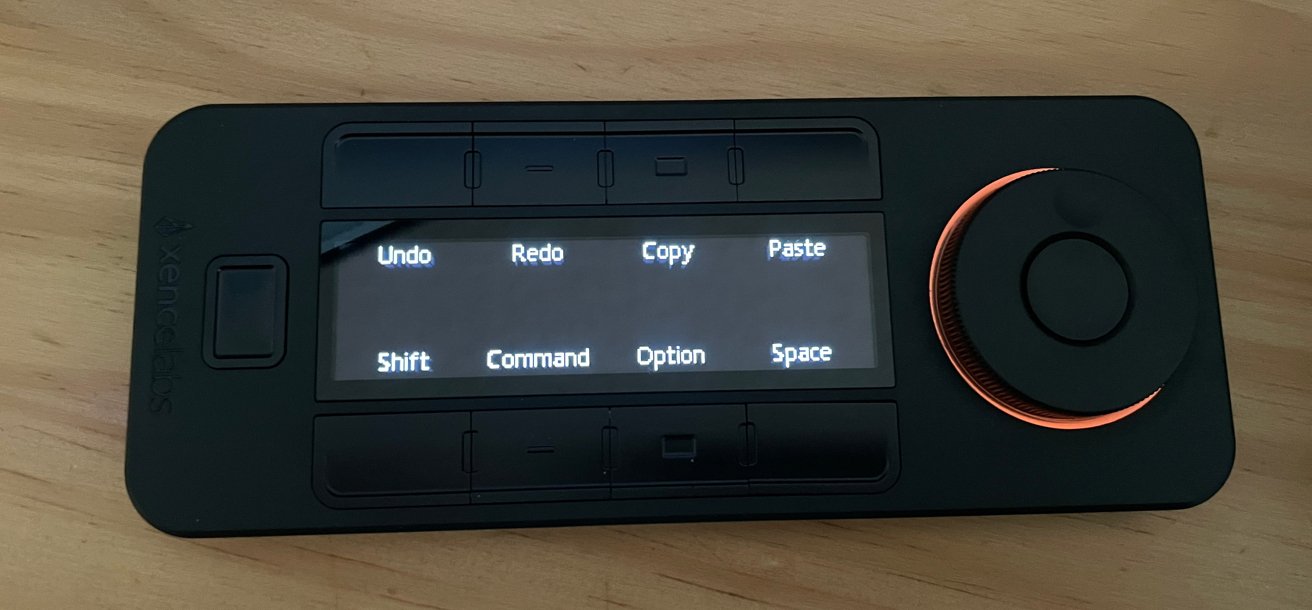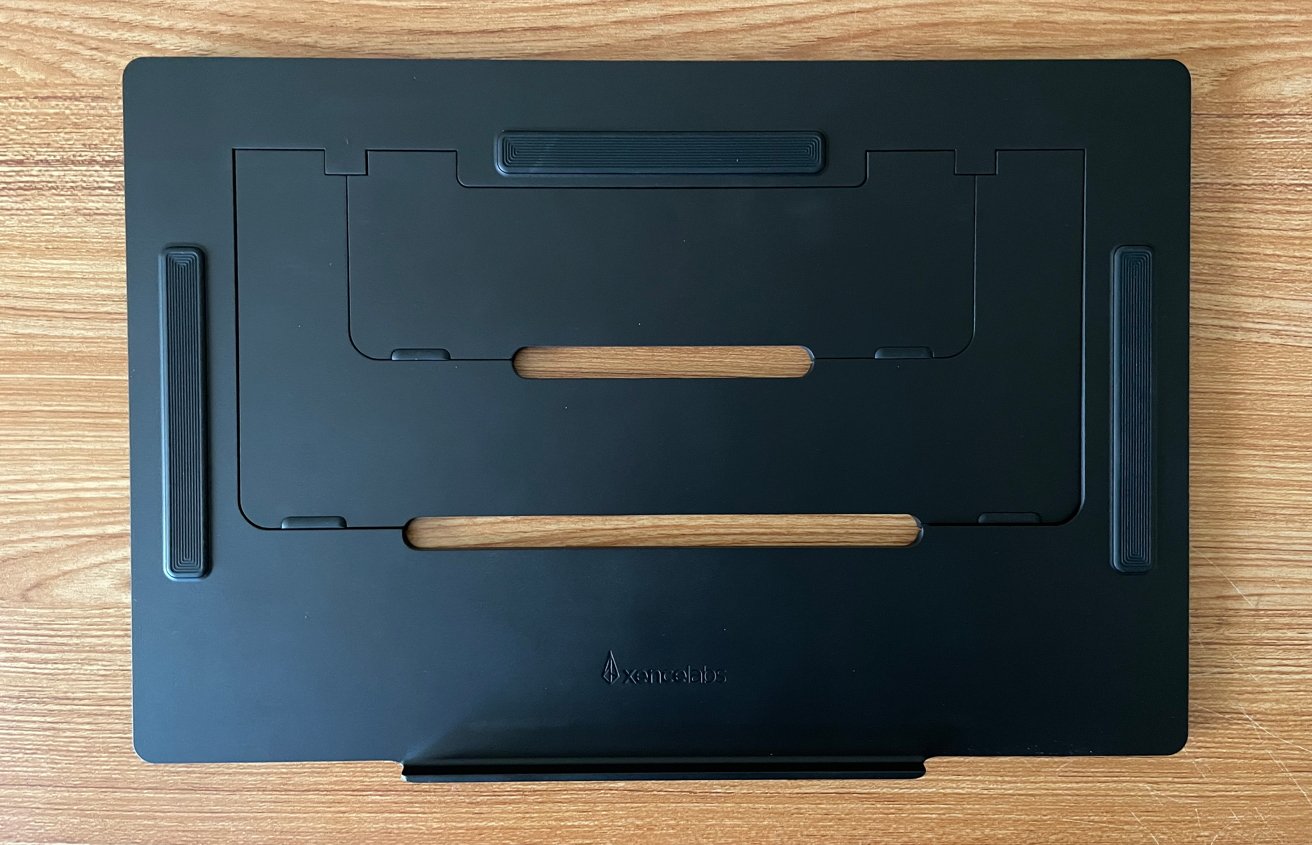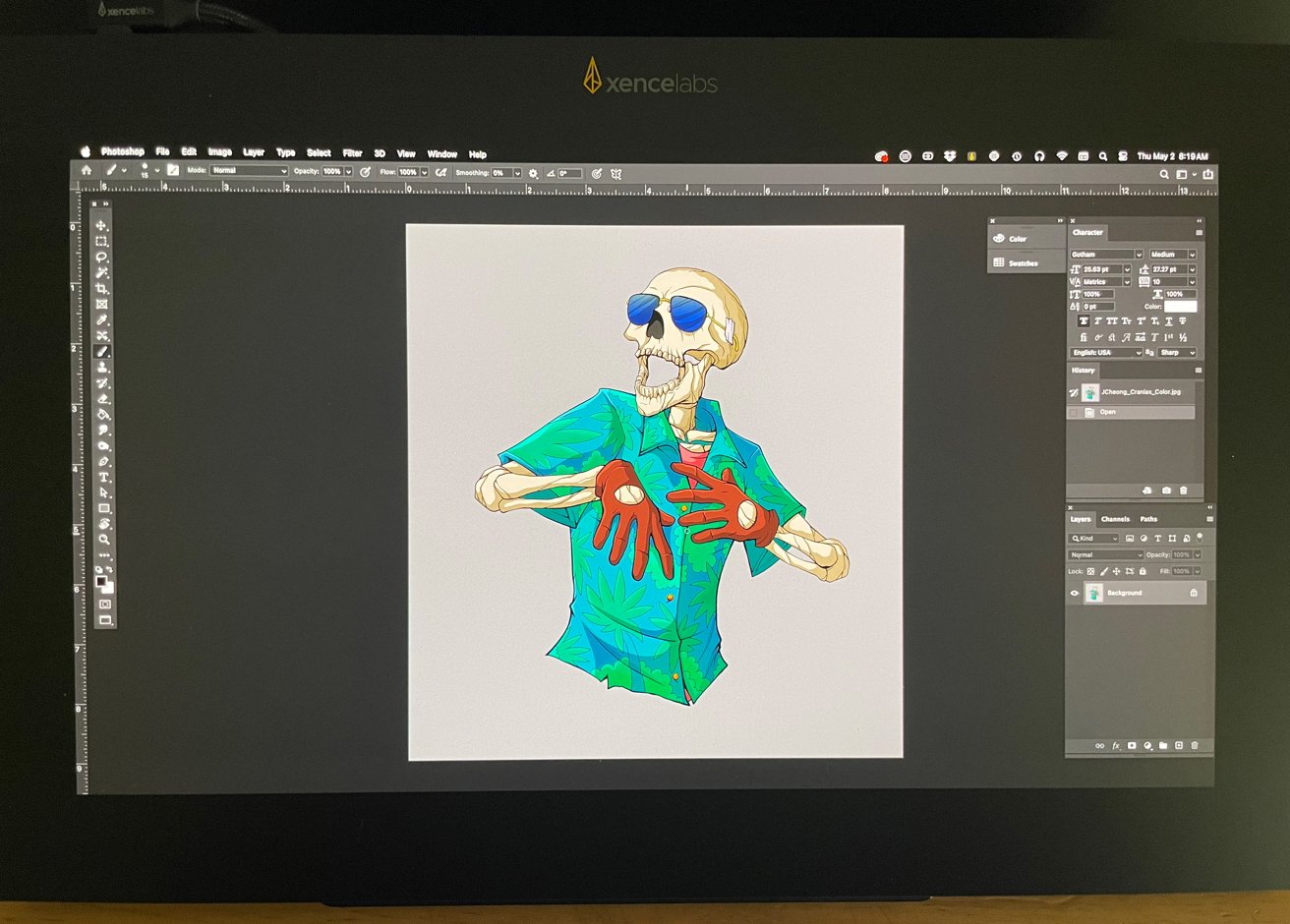Sci-Tech
Xencelabs Pen Display 16 review: Specs, performance, cost

The Xencelabs Pen Display 16 is a great alternative to Wacom for digital artists who want to level up artistry on the Mac.
Artists in 2024 are working in more spaces and ways than ever before. From home offices to schools, shared workspaces, libraries, and coffee shops, the need presented to the pen display industry is simple: Mobility.
In recent years, companies like Apple and Wacom have worked to address this need, via offerings such as the Apple Pencil and the Wacom Cintiq Pro 16.
As with every industry, there will be newcomers who approach things from a new direction. Using the clarity of listening to their audience first, rather than leaning on gimmicks or shortcuts.
Xencelabs is a company making big moves with its incredible Pen Display 24. Its new Pen Display 16 as a viable option for artists on the move, or who want a dedicated pen display that is less expensive than a dedicated desktop display.
Xencelabs Pen Display 16 review — Two options
As of this writing, I use a 2022 Mac Studio with an Apple M1 Max chip, 32GB unified memory, with a 512GB SSD. This Mac Studio is my everyday machine and handles all my projects with zero issues.
That’s not to say that you need Mac Studio power for the Xencelabs Pen Display 16. I just retired an Intel Mac mini, and it performed well on that too.
With the release of the Pen Display 16, Xencelabs is offering up two purchasing options for customers — The Pen Display 16 Bundle and Pen Display 16 Essentials.
The Pen Display 16 Bundle offers a lot, including the Pen Display 16 and many accessories. This includes a mobile easel, two pens, multiple cable options, hub driver, the Xencelabs Quick Keys dongle, a carrying case, pen case, extra nibs, and a drawing glove.
The bundle is everything associated with the Pen Display 16. It’s aimed toward customers who are either mobile or require HDMI and alternate data connection options with their workspace.
The Pen Display 16 Essentials streamlines down the overall package. It contains the Pen Display 16, two pens, pen case, a single USB-C to USB-C cable, carrying case and a drawing glove.
This option is lower in price and is aimed at customers who do not foresee moving around often with the Pen Display 16. The missing items in this option compared to the Pen Display 16 Bundle can all be purchased a la carte from the Xencelabs eStore.
Xencelabs Pen Display 16 review — Specifications
- Dimensions (W x H x D): 16.25 x 10.25 x .47 in
- Active area size: 13.5 x 7.75 in
- Display resolution: 4k OLED
- Weight: 2.67lbs.
- Displayable colors (Maximum): 1.07 billion colors
- Color gamut coverage ratio: Five factory-calibrated color spaces: Adobe RGB (98%), P3-DCS (98%), sRGB (99%), Rec 2020 and Rec 709.
- Pens: 3-Button Pen v2 + Eraser / Thin Pen v2 + Eraser
- Pen technology: EMR
- Pen pressure levels: 8192 levels (Finely Tuned Pressure Curve)
- Pen tilt angle: 60 degrees
- Pen resolution: 5080 lpi
- Pen type: Pressure-sensitive, cordless, battery-free
- Quick Keys dimensions (W x H x D): 6.2 x 2.46 x 0.47 in
- Quick Keys weight: 142 g
- Quick Keys display: 3.12-inch OLED display; clearly displays key functions
- Quick Keys directions: 4 directions (0 degrees / 90 degrees / 180 degrees / 360 degrees); text symbols can be read horizontally or vertically
- Quick Keys battery life: 25-53 hours (1.5 hours charging time)
- Quick Keys controls: Custom buttons: 8 per set. There can be 5 sets giving a total of 40 short-cut keys. Four-mode dial
For ports, the Pen Display 16 offers a single USB-C port at the top of the tablet. To utilize HDMI or external power and data options, you will also need the Xencelabs Hub Driver to route your cables and options to meet your specific needs.
Xencelabs Pen Display 16 review — Build quality
In the unboxing of the Pen Display 16, I was absolutely stunned at how light the unit is. I don’t know what I expected, exactly, but the display is lightweight and feels durable.
If you read the review of the Xencelabs Pen Display 24, you’ll know that I sang the praises for how the Xencelabs hardware does not feel cheap or second-rate. The same can be said for the Pen Display 16.
The edge-to-edge glass is lovely and the unit is thin. It also feels like it could be quite durable.
While not tested, it feels like it could be bumped or dropped onto a desk or carpet, and not immediately feel like I ruined it.
Again, consistent design and application that focuses on quality.
Xencelabs Pen Display 16 review — Setup
Let me say this right at the top — I have never had an easier experience with setting up a new peripheral in my life.
I have unboxed, set up, and configured many pieces of hardware over my 20+ year career and this is by far the easiest. This includes the set-up of the Pen Display 24.
For my Mac Studio and working space, I unboxed the Pen Display, Mobile Easel, pen case, pens, and the included USB-C cable. After setting the display on the easel, plugging in the USB-C cable, and turning it all on,everything was there, visible, and ready to go.
The proprietary Xencelabs driver was already installed for my Pen Display 24. If it hadn’t the set-up instructions contain links and QR codes to take you to instructions and the drivers you will need for Windows, MacOS, or Linux.
The driver interface for the Xencelabs Pen Display 16The driver interface for the Xencelabs Pen Display 16
Through the driver, I was able to calibrate everything for the pen buttons, the display itself, pen pressures, color profiles, etc.
The entire process from unboxing to working was a few minutes and you will need to adjust to find your own comfort zone. But the driver makes it an easy and intuitive experience.
I wish I could use the same pen for both my Pen Display 24 and Pen Display 16 at the same time. Especially for the moments where I might be using the Pen Display 16 as a second screen.
It is a small and very specific request, but as things stand with the hardware, the pens are separate for each unit type.
Xencelabs Pen Display 16 review — In use
First and foremost, there are no fan noises. This is a big deal for users, as it helps keep a pleasant working environment.
One of the big talking points for Xencelabs and this new display is the 4K OLED screen. There is an emphasis on vivid colors and more realistic and/or accurate representation of line art and paintings on screen.
Xencelabs delivered on those talking points. The screen is gorgeous, bright, sharp, and with the edge-to-edge anti-glare surface, it’s very easy on the eyes.
Simulating a public workspace in my office by turning on all the lights, the Pen Display 16 still works and works very, very well.
During testing, there was very little glare, and if you bring this display into your ideal space with non-direct light, it is going to excel. The colors and quality of detail for a 16-inch tablet is staggering.
Xencelabs provides two battery-free EMR pens with the Pen Display 16 — A chunkier 3-button model and a slim Apple Pencil style model. If you’ve used Wacom or Xencelabs products, you’ll be familiar with these types of pens.
Both pens are completely customizable through the Xencelabs driver. It’s also great that both pens are made available to use.
I prefer the chunky stylus pen based on my own comfort and muscle memory, but I know many artists who appreciate the natural feel of something close to a pencil in shape and weight.
The smaller pen may be beneficial to folks who have carpal tunnel or other physical issues with grip strength. The size, weight, and responsiveness of the stylus on the Pen Display 16 could feel like a game changer.
Both pens deliver 8,192 different pressure levels with a resolution of 5,080 lpi. They can be used with a 60-degree tilt in any direction, consistent with the Pen Display 24.
Consistency is key, and for years, Wacom was the only company getting it right. It is a genuine relief to see that Xencelabs is holding their standards for quality and using these pens shines a spotlight on that.
Xencelabs Pen Display 16 review — Quick Keys
The Pen Display 16 Bundle also includes the Xencelabs Quick Keys Controller. I have covered this peripheral in my Pen Display 24 review, but it is worth covering the highlights here as well.
The Quick Keys Controller is a great tool that has the potential to add speed and flexibility to your overall workflow with the Pen Display 16.
The Quick Keys Controller features eight customizable buttons that can be assigned and arranged into sets of shortcuts, commands, and options. There’s support for a wide range of software partners, including Adobe, Foundry, and many more.
A dial on the Quick Keys Controller adds more customization and that dial allows you to switch between saved configurations based on the software you are using.
If you are new to your preferred software or just aren’t the kind of person who retains key commands, the Quick Keys Controller is amazingly helpful. It can save you time and prevent you from doing the menu highlight/drop/select hundreds of times a day.
That time-saving alone is worth the cost to some.
However, unlike the Pen Display 24, this Quick Keys Controller does not attach to the Pen Display 16. It would be impractical based on the size, but you will need to place the Quick Keys Controller nearby to make the best use of it.
Xencelabs Pen Display 16 review — Mobile easel
Included with the Pen Display 16 Bundle is the Xencelabs Mobile Easel. This is a sturdy and lightweight stand for the Pen Display 16 that allows positioning between 18 degrees and 32 degrees for a wide range of motion and options to save your posture.
The Mobile Easel is strong, and it is nice to have the options, but it is still not ideal for someone on the taller side. They would need to elevate the easel and pen display further or drop into a lower seat.
A standing desk could help this quite a bit, but that is not an option for everyone.
Xencelabs states in its press literature that a Desktop Easel with a variety of tilt angles using a standard VESA mount and quick release is coming in the summer of 2024.
The idea of more options and a VESA mount for an Ergotron arm sounds very cool, and I will be looking forward to seeing what Xencelabs offers.
Xencelabs Pen Display 16 review — Working Experience
Spending days with the Pen Display 16 and creating artwork from start to finish with it, I can report that it is an excellent experience.
After testing a variety of display tablets that targeted the “mobile” lifestyle, from iPad to Wacom’s offerings, it’s safe to say that the Pro Display 16 is better overall for my use and standards.
The tablet is vivid, quiet, and insanely responsive. The only slight stumble was adjusting from the real estate of the Pen Display 24 down to the Pen Display 16 from a muscle memory standpoint.
I am a “shoulder illustrator,” meaning I have a range of motion in my arm when I draw and the smaller footprint took about an hour to get used to. Once I did, it was smooth sailing.
That said, the 4K OLED display is gorgeous. However, the native resolution and size of menus, toolbars, and UIs meant I had to adjust font sizes to account for my older eyes.
It is a small change to make, but other folks with progressive lenses or readers might want to keep this in mind.
To test the Pen Display 16, I created a recent commission piece that I knew would be vibrant and fun once completed.
The process was wonderful and as an added test, I worked to implement the use of the Quick Keys Controller as well. I can say that while it is not my standard, it did give me ideas for how it could be worked into other apps that I use outside of Photoshop.
Ultimately, it feels like Xencelabs took the approach it always takes. Namely looking at the industry and focusing on aspects it can improve or just do flat out better than everyone else.
As someone who was a decades-long Wacom fan who thought the era of quality display tablets had come to an end, it is a genuine relief to see Xencelabs thriving.
Having a display tablet like this for mobile work, meetings, and for the simple, occasional change in venue, is amazing. It is good for artists, and it is good for the industry.
Xencelabs Pen Display 16 review — Pricing and Value
With all of this said, it always comes down to the bottom line. It is easily worth anyone’s investment.
Xencelabs is offering the Pen Display 16 Bundle for $1,249 MSRP USD and the Pen Display Essentials for $999 MSRP USD.
Neither of these options are what you would call inexpensive, but you are getting great value for money. Wacom’s Cintiq Pro 16 retails for $1,599 MSRP USD in the Wacom eStore and while it is a good display tablet, I think the Pro Display 16 is better overall.
The Pen Display 16 is not a casual purchase. It’s still recommended that hobby artists should experiment with working on an iPad for a while before making the leap and investment.
However, if you love the idea of having a dedicated pen display that delivers, this is the best option out there. You’ll save a little money with even the Pen Display 16 Bundle compared to the Wacom, and you’ll have a better pen display.
Hardware like this is an investment of time and money. You need a pen display that will not only meet those needs but vastly exceed them.
Xencelabs continues to show the world what is possible with hardware, common sense features, and pricing. They are still the breath of fresh air this industry needs.
Xencelabs Pen Display 16 review — Pros
- Easy set up and driver installation.
- Incredible screen display.
- Clean proprietary driver with buckets of customization options.
- Zero fan noise.
- Sturdy construction.
- Quick Key Controller (not vital but a good peripheral).
- Excellent pen responsiveness and line quality.
- Costs less than comparable Wacom options (see below).
Xencelabs Pen Display 16 review — Cons
- Not a “cheap” option hobby for artists (see below).
- No native VESA mount.
- The native display size for UIs could be a strain on poor eyesight.
- The Mobile Easel is not included in both bundles.
Rating: 4.5 out of 5
Where to buy the Xencelabs Pen Display 16 review
The Xencelabs Pen Display 16 is available from Xencelabs, priced at $1,249 for the bundle.
Sci-Tech
India’s X alternative to shut down services

Millions of social media users in India are stranded after homegrown microblogging platform Koo, which had branded itself as an alternative to X, announced it was shutting services.
The platform’s founders said a shortage of funding along with high costs for technology had led to the decision.
Launched in 2020, Koo offered messaging in more than 10 Indian languages.
It gained prominence in 2021 after several ministers endorsed it amid a row between the Indian government and X, which was then known as Twitter.
The spat began after Prime Minister Narendra Modi’s government asked the US-based platform to block a list of accounts it claimed were spreading fake news. The list included journalists, news organisations and opposition politicians.
X complied initially but then restored the accounts, citing “insufficient justification”.
The face-off continued as the government threatened legal action against the company’s employees in India.
Amid the row, a flurry of supporters, cabinet ministers and officials from Mr Modi’s Bharatiya Janata Party (BJP) migrated to Koo overnight. Many of them shared hashtags calling for X to be banned in India.
By the end of 2021, the app had touched 20 million downloads in the country.
However, the platform has struggled to get funding in the last few years.
On Wednesday, founders Aprameya Radhakrishna and Mayank Bidawatka said that Koo was “just months away” from beating X in India in 2022, but a “prolonged funder winter” had forced them to tone down their ambitions.
“We explored partnerships with multiple larger internet companies, conglomerates and media houses but these talks didn’t yield the outcome we wanted,” they wrote on LinkedIn.
“Most of them didn’t want to deal with user-generated content and the wild nature of a social media company. A couple of them changed priority almost close to signing.”
In February, Indian news websites had reported that Koo was in talks to be acquired by news aggregator Dailyhunt. But the talks did not succeed.
In April 2023, Koo fired 30% of its 260-member workforce as the company faced severe losses and a lack of funding.
The founders said they would have liked to keep the app running – but the cost of technology services for that was high and so, they “had to take this tough decision”.
Sci-Tech
Would having an AI boss be better than your current human one?

By MaryLou Costa, Business reporter
 Hannu Rauma
Hannu RaumaWith the stress of managing 83 employees taking its toll, Hannu Rauma was feeling discouraged and frustrated.
“I was getting too bogged down in all these things that were going wrong amongst the teams, and feeling this disappointment,” says Mr Rauma, who is based in Vancouver, Canada.
He is a senior manager at a company called Student Marketing Agency, which employs university students to provide marketing support for small businesses.
“When I was bringing new clients on board, half of my mind would be saying, ‘we’re going to screw up’, and it would dampen my enthusiasm.”
But Mr Rauma says that all changed from last November, when the firm began using an autonomous AI manager developed by US-based company Inspira.
The AI manager helps the agency’s employees, who work flexible hours remotely, to set their schedules and plan their workloads in advance.
It checks their timekeeping, sends them deadline reminders and regular check-in messages, and records the time spent on different clients, so the latter can be billed accurately. The AI also makes suggestions to improve the wording of written text, is available to answer work-related questions, and automatically updates everyone’s work progress in a central portal.
Mr Rauma says that the shift towards an AI manager has not only reduced his stress levels, but has enabled his employees to work faster and be more productive. “I’m able to focus on the growth of the company and all the positive things. It’s added years to my life, I’m sure,” he says.
Mr Rauma adds that his relationships with his employees have also improved drastically. “Before, it felt a lot like a father-child situation. Now, we’re more on an equal footing. Before, it was only about solving problems. But now we’re able to have more light-hearted discussions.”
But not everyone at Student Marketing Agency is using the AI manager yet. Mr Rauma and 26 of his 83 employees were actually part of a study run by Inspira and academics from Columbia University, Arizona State University, and the University of Wisconsin to compare the performance of the AI manager with its human counterparts.
Participants were divided into three groups: one coached by a human manager, another by the AI manager, and the last group by both AI and human manager.
The AI manager achieved a 44% success rate in getting employees to pre-plan their workdays in advance, and was able to motivate the employees to log in on time 42% of the time. These figures were comparable to the human manager, who achieved scores of 45% and 44% for those two areas.
Yet when the AI manager worked in partnership with a human manager, together they achieved a 72% success rate in getting employees to pre-plan their workdays, and managed to achieve 46% on-time success.
Despite the study being statistically small, and concentrated on a specific type of worker and field, its results point to interesting implications for companies introducing AI tools.
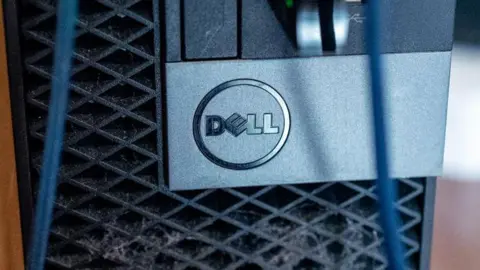 Getty Images
Getty ImagesWhile businesses like UPS, Klarna, Dell and others have announced significant job cuts this year, with the intention of replacing many roles with AI, Prof Paul Thurman, from Columbia University in New York, argues that swapping management roles completely for AI would be a mistake.
“The middle management layer is the most critical layer in any organisation,” says the professor of management. “They’re the layer that, if it starts turning over, you’re in for a wild ride. Your people don’t see continuity, they don’t get mentoring and coaching… all the human things that human managers are better at than AI and should be focusing on.”
AI, Prof Thurman adds, can liberate managers from endless reminding and checking in, to focus on more innovative ways of working. For example, managers can cherry pick project teams based on individual skillsets, oversee the brief, then hand over to their AI to manage minutiae like deadlines.
AI can also identify who in the team is falling behind and may need to be managed more closely by a human, and by the same token, hone in on star performers who require extra recognition.
But companies should steer away from AI managers becoming a surveillance tool, he says.
“You don’t want to get to a point where you are noting that, not only do people not clock in on time, but they take too much time at lunch, and they’re not eating enough salad. You don’t want to go that far,” says Prof Thurman. “You want to find the right way to encourage the right behaviours.”
AI managers can also help people who have become “accidental managers” – people who excel in their roles and end up managing people as a result, despite management not being a natural skill for them, says Tina Rahman, founder of London-based HR consultancy, HR Habitat.
“We did a study which looked at the reasons people leave a job. Almost 100% of the respondents said it was because of bad management.
“Some of them said they didn’t like the way they’d been managed, and most of them also said it was because they didn’t know what was expected of them or if they were doing a good job,” says Ms Rahman.
“You’d assume that an AI manager would be built to give those correct instructions, to give complete transparency on the requirements, and the outcomes. People are likely to be more productive when they know what’s expected of them.”
But an over-reliance on AI management sets the tone that companies only care about output and not people, Ms Rahman warns.
“It’s going to be very hard for a business to tell their employees that they’re introducing this brand new AI system that’s going to completely manage them, then say, with the same face, that ‘we care about your experiences in the workplace,’” she says.
 James Bore
James BoreYet perhaps the biggest concern about AI managers is not from a people perspective, but from a cybersecurity one, warns James Bore, managing director of cybersecurity consultancy, Bores, and speaker and author.
“If you have an AI manager, and you’ve given them all of the company’s processes, procedures, and intellectual property that is suddenly all in the software, it can be kidnapped by someone who wants to clone it, and it could also be held to ransom,” says Mr Bore.
“If you’ve come to rely on it, which companies will when they start replacing humans with AI, you’re kind of stuck, because you’ve got no resilience, no option to switch back to the humans, because you don’t have them anymore.”
Rather than companies becoming more efficient through an extensive use of AI, Mr Bore says there could be an unintended consequence beyond becoming dependent on systems that could fail.
“The more you automate, and the more you remove people from your business, yes, you’ll bring down costs. But you will also make your company more replaceable.”
Sci-Tech
Judge Backs Challenge to F.T.C.’s Noncompete Ban, at Least for Now

A federal judge on Wednesday backed an initial legal challenge to the Federal Trade Commission’s ban on noncompete agreements, which is scheduled to take effect in September.
Judge Ada Brown granted an injunction requested by several plaintiffs, saying the ban cannot be enforced against them pending a final ruling.
But while the ruling is preliminary, she said that the F.T.C. lacked “substantive rule-making authority” with respect to unfair methods of competition and that the plaintiffs were “likely to succeed on the merits” of their challenge.
Judge Brown, of U.S. District Court for the Northern District of Texas, said she expected to issue a final decision by the end of August.
The commission “stands by our clear authority, supported by statute and precedent, to issue this rule,” said Douglas Farrar, an F.T.C. spokesman. He added that the agency would “keep fighting” noncompetes in an effort to promote worker mobility and economic growth.
In April, the tax firm Ryan L.L.C. sued to block the near-total ban on noncompetes, just hours after the F.T.C. voted 3 to 2 to adopt the rule. The U.S. Chamber of Commerce later joined the case as a plaintiff, as did the Business Roundtable and two Texas business groups.
Banning noncompete agreements, which prohibit workers from switching jobs within an industry, would increase workers’ earnings by at least $400 billion over the next decade, the F.T.C. estimates. The agreements affect roughly one in five American workers, or around 30 million people, according to the agency, whose purview includes antitrust and consumer protection issues.
“If you’re not working in the most productive place you could be working because of a noncompete, that’s a loss for the economy,” Aviv Nevo, director of the F.T.C.’s Bureau of Economics, said at a conference in April.
Business groups argue that the ban would limit their ability to protect trade secrets and confidential information. The Chamber of Commerce and other groups assert that the F.T.C. lacks constitutional and statutory authority to adopt its proposed rule, with Ryan L.L.C. calling it “arbitrary, capricious, and otherwise unlawful.” Another lawsuit seeking to block the rule is pending in federal court in Pennsylvania.
But the three Democrats on the five-member commission maintain that it can legally issue rules defining unfair methods of competition under the F.T.C. Act of 1914, the law that created the agency. Their position has garnered some bipartisan support, too: Representative Matt Gaetz, Republican of Florida, argued in a brief filed in the Texas case that the noncompete ban falls “squarely within” the rule-making authority granted to the commission by Congress.
The Supreme Court’s decision last week to limit the broad regulatory power of federal agencies could raise the agency’s legal hurdles.
Mark Goldstein, a labor and employment lawyer at Reed Smith in New York, said that while limited to only the plaintiffs at this stage, Judge Brown’s injunction was a strong indication that she would deem the F.T.C.’s rule invalid, preventing it from going into effect nationwide.
“The writing is on the wall there,” Mr. Goldstein said. “I have never seen a court issue a preliminary injunction and then, absent some extremely unusual circumstances, issue a final decision that wasn’t consistent with the preliminary injunction.”
As litigation over the noncompete rule drags on, some lawyers are already advising employers to start relying more heavily on different agreements to protect trade secrets and business interests.
In a blog post after the F.T.C. adopted its noncompete ban, the law firm Winston & Strawn suggested that employers adopt alternative measures, such as narrowly tailored nondisclosure agreements and requirements that employees repay the company for training costs if they leave before a set period — known as training repayment agreement provisions, or TRAPs.
“Focus on these additional protections has become greater,” said Kevin Goldstein, an antitrust partner at Winston & Strawn.
But even those agreements are under increasing scrutiny. The commission’s final rule encompasses “de facto noncompetes” — measures that, in effect, prevent a worker from switching jobs within an industry, even if they aren’t labeled noncompete clauses. And employers are eyeing the shifting landscape of state and federal restrictions on such covenants, including nondisclosure agreements, beyond the F.T.C.’s rule.
While the commission’s vote to ban noncompetes has garnered the most attention, moves from other federal agencies and state legislatures against agreements that restrict worker mobility are simultaneously on the rise.
“There’s been increased hostility toward these agreements in general, across the country,” said Christine Bestor Townsend, co-chair of the unfair competition and trade secrets practice group at Ogletree Deakins.
Last month, a National Labor Relations Board judge ruled for the first time that a noncompete clause is an unfair labor practice, as part of her decision in an unfair-termination case. The judge also broke new ground by barring a nonsolicitation clause, which restricts soliciting clients or employees of a former employer; she argued that both types of agreements could chill protected activity, including union organizing.
That ruling followed a memo last year from the labor board’s general counsel, Jennifer Abruzzo, that clarified her view that noncompete provisions in employment contracts violate the National Labor Relations Act, except in limited circumstances.
“It’s one thing to get a guidance memo from the general counsel, which is significant and important,” said Jonathan F. Harris, an associate professor at Loyola Law School in Los Angeles who studies contracts and employment law. “And it’s another thing to see the adjudication side of the N.L.R.B. agree with her.”
These kinds of restrictive covenants tend to scare workers away from labor organizing, Mr. Harris said, “because the consequences of being fired for organizing become that much greater if you can’t get another job afterwards.”
Other federal agencies have jumped in as well, eyeing a range of employment provisions that they argue unfairly constrain workers. It’s part of the whole-of-government approach by the Biden administration to what it considers anticompetitive restraints on worker mobility.
The Consumer Financial Protection Bureau, for example, issued a report last summer on the dangers of provisions requiring workers to repay training costs if they leave a job before a certain time elapses.
It’s not just a federal push: State governments are also stepping in to promote worker mobility — a trend that was in motion before the F.T.C. voted to ban noncompetes in April, but one that has gained momentum since.
Last month, the Rhode Island legislature passed a bill to ban noncompetes, joining Minnesota, California, Oklahoma and North Dakota. Dozens more states have enacted partial restrictions.
“Minnesota didn’t turn into a gaping crater,” said Pat Garofalo, the director of state and local policy at the American Economic Liberties Project, a progressive think tank, referring to the state’s wide-reaching ban on noncompetes that went into effect last year. “Once a domino falls over, a bunch of other dominoes fall over after.”
State laws can also prove more resilient to challenges than federal rules.
“State legislatures obviously have a lot of interest in getting these rules on the books right now,” Mr. Garofalo said.
-

 African History5 years ago
African History5 years agoA Closer Look: Afro-Mexicans 🇲🇽
-

 African History5 months ago
African History5 months agoBlack History Facts I had to Learn on My Own pt.6 📜
-

 African History5 years ago
African History5 years agoA Closer Look: Afro-Mexicans 🇲🇽
-

 African History1 year ago
African History1 year agoMajor African Tribes taken away during the Atlantic Slave Trade🌍 #slavetrade #africanamericanhistory
-

 African History1 year ago
African History1 year agoCameroon 🇨🇲 World Cup History (1962-2022) #football #realmadrid #shorts
-

 African History5 months ago
African History5 months agoBlack History Inventors: Mary Kenner 🩸
-

 African History1 year ago
African History1 year agoPROOF AFRICAN AMERICANS AIN'T FROM AFRICA DOCUMENTED EVIDENCE
-

 African History1 year ago
African History1 year agoNo African pre-Columbus DNA? 🤯🤯 #history #mesoamerica #mexico #african

